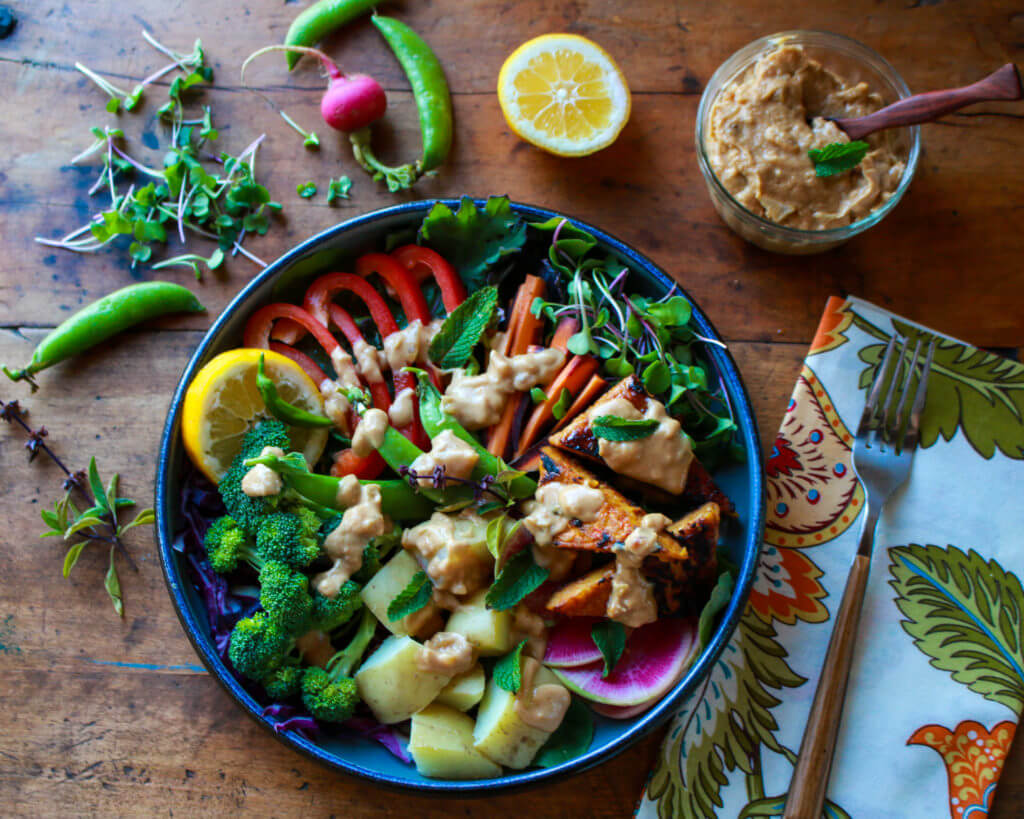What are Microgreens?

These cool, tender shoots are making a big splash in both cuisine and health. I’m answering your top questions about microgreens today.

What Are Microgreens?
A relative newcomer to the produce scene, microgreens have sprouted into quite the culinary trend. Microgreens got their start in Southern California in the mid-1990s. What began as a few basic microgreen varieties like arugula, basil, beets, and cilantro, has burgeoned into dozens of varieties. Thin and delicate, microgreens are the tiniest form of edible greens, micro-versions of salad greens, herbs, vegetables, and edible flowers. Though short on height (at one to three inches), they are tall in flavor. Don’t confuse them with sprouts, which are harvested just after a seed’s germination; microgreens are the second phase of a seed’s development. They have established roots and are harvested at the opening of the first leaves, from 10 to 21 days after the seeds are sown.

What Are the Health Benefits of Microgreens?
Their rainbow hues—shades of green to fuchsia—denote their cache of health-protective plant pigments. Depending on the microgreen variety, they provide varying amounts of vitamins A and C, minerals and fiber.

Microgreens are such a new culinary trend that the science has yet to catch up with their health benefits, according to Gene Lester, PhD, USDA plant physiologist. Many varieties are immature versions of leafy greens, but others are the young leaves of vegetables like radishes or broccoli, thus their nutrition profile does not necessarily match that of the mature vegetable. For example, the nutritional value of microgreen radishes, which consist of young radish top leaves, doesn’t equal the nutritional value of the mature radish root. However, there is some evidence that young leafy greens may be higher in nutritional quality than mature leaves. Lester points to a study he conducted on spinach, in which he discovered that younger leaves generally have higher levels of vitamins C, B9 and K1, and the carotenoids (plant pigments with antioxidant action) lutein, violaxanthin, zeaxanthin and beta-carotene than more mature leaves (Journal of Agriculture and Food Chemistry, January 2010).

Are Microgreens Safe to Eat?
Unlike sprouts, which have been linked to food safety concerns, and are essentially a seed’s germination, microgreens are more developed. Microgreens are the second phase of a seed’s development, with established roots and the opening of the first leaves. There is one recent scientific review that looked at food safety, and noted that there are similarities in production techniques among micro greens and sprouts, though they are considered different vegetable products. So, there is an opportunity for food safety concerns, as with many fresh produce items. Look for those that are produced safely, and when you handle them at home refrigerate them properly in a covered container and use them up within a few days. Keep all foods that use microgreens at an appropriate temperature. Use safe food handling methods, including clean utensils, sanitized counter tops, and clean hands.

Where Can I Get Microgreens?
Microgreens are all the rage in restaurants, and are becoming more available in specialty markets. I like to get them from my farmers market, where they are harvested fresh that day and they last for a few days in my own kitchen. They are easily grown at home in a backyard or on your windowsill. Experiment with an array of flavors, textures, and colors of micros like fennel, arugula or chrysanthemum. You can add more color, variety and texture in your diet with these tender greens.

What Do I Do with Microgreens?
Enjoy them in a salad, sandwich, wrap, veggie-burger, sushi rolls, or pizza, and definitely use them as a garnish or topping on most any dish. Whatever the mix, they deliver plenty of healthy nutrients with refreshing punch and pizzazz.

Check out other nutrition questions I’m answering at The Plant-Powered Dietitian:
Does Roasting Veggies Ruin Nutrients?
Is “Clean Eating” a Healthy Lifestyle?
How to Prepare Dried Beans to Avoid Antinutrients
About Ask Sharon:
As part of my program “Ask Sharon”, I am answering the top question of the month submitted through my blog, Facebook, Twitter or Instagram to answer here. You can even win a prize! Don’t forget to submit your burning nutrition question via my blog, or other social media.


